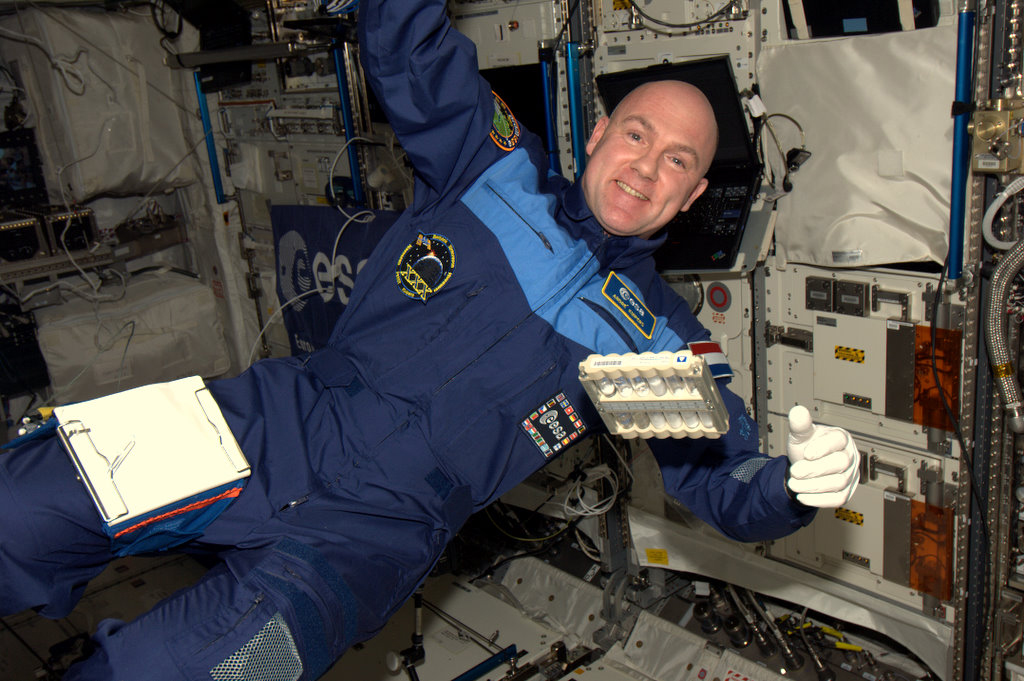Source: NASA
| EPO Foam Stability dates and figures | |
| Experiment Session | 11 January 2012 |
| Performed by | André Kuipers |
| Science runs | 3 |
| Science running time | 1 hour |
| Number of cell arrays | 3 |
“Second successful scientific execution on orbit with educational added value”
The first part of the EPO Foam Stability experiment has been successfully performed inside Columbus by André Kuipers on January 2012. This experiment first part pursued two main objectives: one scientific and one educational. After the data evaluation of the former FOAM-S experiment, scientists proposed new fluid mixtures samples testing. In addition the ESA Education Office has created an educational programme that will transmit science on orbit activities to classrooms across Europe, being EPO Foam Stability one of the demonstration experiments selected.
The scientific experiment philosophy has not changed with respect to the first execution in 2009. The experiment aims to study the so called “wet” foams, which cannot be stabilized on earth because of drainage (process absent in micro-gravity conditions). A total of 3 cell arrays, each of them comprised of 12 cylinders filled with different fluid mixtures samples, have been recorded with a HD video camera using a white background. The hardware was uploaded to the ISS on Progress M-13M (ISS-45-P), and all the video recordings have been downlinked to ground. E-USOC supported this activity through real time audio and video from the ISS.
The educational activities aim at introducing the concept of foams to European students age 10-14. School children will be able to operate their own identical experiment on ground and witness how foams differ under the influence of gravity compared to the ISS’s weightless environment. The study of the behaviour of foams under freefall conditions has strong practical applications: solid foams like aluminium foam are as strong as pure metal but much lighter, and they are used in advanced aerospace technology or manufacturing as well as cutting edge medical equipment. Food companies are also interested in the properties of champagne bubbles, heads of beer or chocolate mousse to develop better and tastier products on Earth.
The second part of the EPO Foam Stability experiment will be performed on 24th April 2012, along with another educational experiment called Convection. It will consist on a livelink connection between the station and different venues in several European countries, from which the school children will be able to ask questions to André Kuipers. Stay tuned and follow us to know the results of this livelink.
More information:



